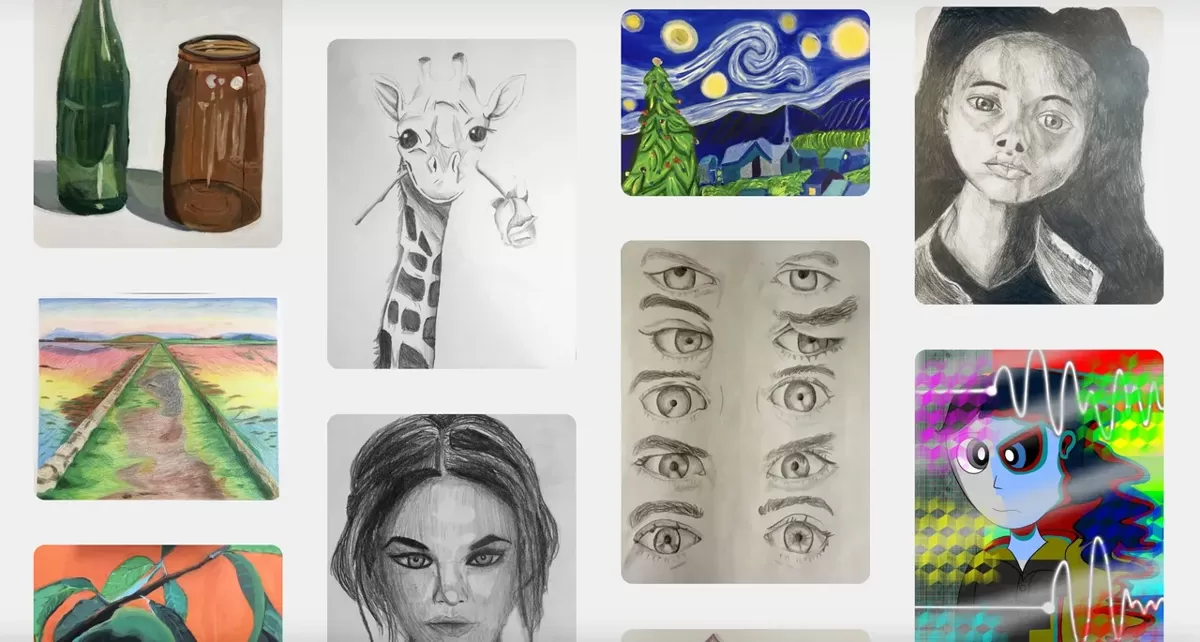What to Expect when applying for Art in College

Disclaimer: This article was originally published in the previous host, GoDaddy on November 29, 2024, and has been transferred for preservation.
Applying to an art school, whether it be part of a university or entirely on its own is challenging. High school students need to fulfill many goals on their next journey to college, such as building a solid portfolio and achieving a high GPA on their report cards. Of course, some may not know where to start or what work they plan to submit, so I created a starter guide on what high school students should follow before they’re prepared to continue making art for college.
1. Create art even out of school.
You’ll need to do more than just make art during the school year to build your portfolio. Consider practicing making art at home. You can find some references in your photo album or online and turn them into an artistic composition. Spend time making sketches or paintings at home or during programs that teach art outside your school. Art teachers will also expect you to create art as a part of your homework(on weekdays and weekends), not just during class.
2. Avoid submitting fan art.
Making art based on your favorite TV shows, web series, movies, anime, mangas, cartoons, comics, and video games is fun. Unfortunately, colleges are most likely not going to accept fan-made art for two good reasons:
- Fan art is commonly based on media copyrighted by various companies and may cause copyright infringements (even if you credit the owners and original creators).
- Colleges will find fan art “uncreative” and expect you to make art based on original content from your imagination and vision.
Of course, making original art isn’t always easy. Some great ideas are creating compositions of objects, portraits, models, and landscapes from pictures or real life. This doesn’t mean you should abandon your love and skill for fan art, but including it in your portfolio is not recommended.
3. Rely on a variety of mediums, not just digital.
Depending on the college you plan to attend, art schools expect you to learn a variety of media, such as painting, digital graphics, printmaking, sketching, sculpture, jewelry, and more. The classes you may be taking in high school may also expect you to achieve art in various mediums. Of course, every school is different and may not be able to teach the same mediums colleges do, but you can try your best to achieve the mediums high schools are willing to teach. Typically, the most common subjects taught to high schoolers are painting, sketching, ceramics, and photography.
4. Apply for both universities and standalone art schools.
It will take more than just one school to apply before you’re officially an undergraduate student. You can choose a variety of art schools that are all on their own, or you can select an art school that’s part of a university. You should apply for both kinds of schools depending on your preferences because some may offer better opportunities for your preferred majors. In contrast, others may have better learning accommodations to help you prepare for your future college journey.
5. Take achievement tests and write essays for college.
Many teachers may insist that you take achievement tests (SAT, ACT, Stanford 10, STAAR, etc.) and essays for college. While not every school requires you to participate in these assignments (especially since the COVID-19 pandemic), they are still recommended because they can help students win a higher chance of getting accepted into the colleges students are applying to and wish to attend the most, especially if they are applying for a fine arts major.
6. Interview with college advisors
Another essential strategy is interviewing with college advisors. High schoolers will likely have to meet with advisors depending on the school they plan to attend. Most of the questions advisors will ask students (besides names and grade levels) are their preferred majors and why they want to apply for the school. Students are also welcome to ask advisors questions if they need additional information. Advisors in art schools will also like it if the students share some of their compositions, and if that’s so, here’s what students will need to know when sharing their work.
- They should include clear and crisp digital photo files of their work (PDFs, PNGs, and JPEGs are most recommended).
- They must be the most substantial works they made in their portfolio.
- The student must briefly describe the work(s), including explaining its name, medium, year of creation, and why it was created.
7. Limit the work you plan to include in your final portfolio.
As you continue to improve your artistic talents, your compositions will be stronger than initially. Usually, the best works of art in a high school portfolio are created during the student’s junior and senior years. Do not expect your choice of art schools to let you submit all your high school compositions because they do not have the time to review them all. The average range of works you can submit digitally is between ten to twenty. Please take the time to determine your top ten to twenty best works before you’re ready to share them with various colleges.
8. Submit your work for art festivals and competitions for high school students.
Rather than just submitting your art to colleges, you can also share your work at arts festivals and competitions. There are many significant events for high schoolers (and at lower levels) to participate in, whether from private or public schools. Even if you don’t get a lot of recognition or awards, what matters is that you try to showcase your work during public events, proving to colleges you are not afraid to share your art with large audiences.
As a junior college student, I am sharing some tips and tricks I experienced before I graduated and attended the School of Art at Texas Tech University. I hope that high schoolers (and their parents) reading this article will find these strategies beneficial if they also plan to major in art. This article encourages students to know what to expect when searching for the best art college to give them the advantages they will need starting at an undergraduate level. In a few years, I'll gladly create an article with more tips and tricks when applying for a master's degree in art.
